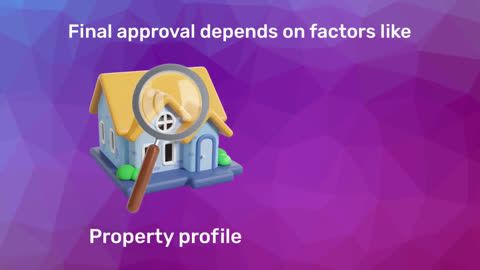Governments set the guidance value to ensure that property buyers and sellers don't understate the transaction price to evade taxes. It helps maintain transparency in real estate dealings and ensures fair revenue collection through stamp duty and registration fees.
Why is guidance value important?
- Tax implications: The guidance value directly impacts the stamp duty and registration fees paid during property transactions. Even if you purchase a property below the market rate, you must pay these fees based on the higher of the transaction value or the guidance value.
- Market fairness: It helps prevent undervaluation of properties and fosters fair market practices. Both buyers and sellers benefit from standardized benchmarks in an otherwise fluctuating real estate market.
- Home loan considerations: Financial institutions often consider the guidance value when evaluating property prices for loan eligibility. A clear understanding of the guidance value can help you plan your finances and secure a home loan seamlessly.
How is guidance value determined?
Local authorities analyze various factors to set the guidance value:- Location: Prime areas generally have higher guidance values compared to less developed regions.
- Infrastructure: Proximity to schools, hospitals, and public transport impacts property value.
- Property type: Residential, commercial, and industrial properties have different benchmarks.
- Market trends: The government periodically revises guidance values to match real-time market conditions.
Impact of guidance value on property transactions
- Buyer’s perspective: When purchasing property, you must pay stamp duty and registration fees based on the guidance value or transaction amount, whichever is higher. This means you could end up paying higher fees even if you negotiate a lower price with the seller.
- Seller’s perspective: Sellers must declare their property sale price equal to or above the guidance value. This minimizes discrepancies in income declarations and tax liabilities.
- Loan approval: When applying for a home loan, lenders use the guidance value to assess the property’s worth. If the market price is significantly higher, you might need to arrange additional funds to bridge the gap.
Differences between market value and guidance value
| Aspect | Market value | Guidance value |
| Definition | Price agreed upon by buyer and seller | Minimum price set by the government |
| Flexibility | Subject to negotiation | Fixed by local authorities |
| Basis for taxes | Not directly considered | Used for calculating stamp duty |
Guidance value and its role in home loans
A property's guidance value, also known as the circle rate or ready reckoner rate, affects home loans in several ways, including:- Loan amount:The bank will only lend a percentage of the property's value, so a lower valuation will result in a lower loan amount.
- Registration fees and stamp duty:The guidance value is used to calculate these fees.
- Taxation:Buying a property below the guidance value can lead to extra taxes.
- Financing problems:Buying a property below the guidance value can lead to potential financing problems.
Tips for buyers and sellers
- Research thoroughly: Always verify both the guidance and market values before finalizing a deal.
- Negotiate smartly: Use the guidance value as a baseline for negotiations.
- Plan for taxes: Factor in stamp duty and registration fees to avoid last-minute financial stress.
Explore Bajaj Housing Finance Home Loan
Understanding guidance value is essential, but so is choosing the right financial partner for your home purchase. With Bajaj Housing Finance Home Loan, you get:1. High loan amount: Secure funding up to Rs. 15 crore* to turn your dream home into reality.
2. Low interest rates: Enjoy interest rates starting 7.99%* p.a., and EMIs as low as Rs. 722/lakh*.
3. Quick approval: Get approved within 48 Hours* of applying – sometimes even sooner.
4. Flexible repayment tenure: Choose a repayment term of up to 32 years for comfortable EMIs.
5. Simple application: Take advantage of doorstep document collection for a smooth process.
6. Balance transfer facility: Move your existing home loan and get a top-up loan with better terms.
Whether you’re buying your dream home or investing in real estate, Bajaj Housing Finance ensures a seamless journey. Explore your options today and turn your property dreams into reality.




